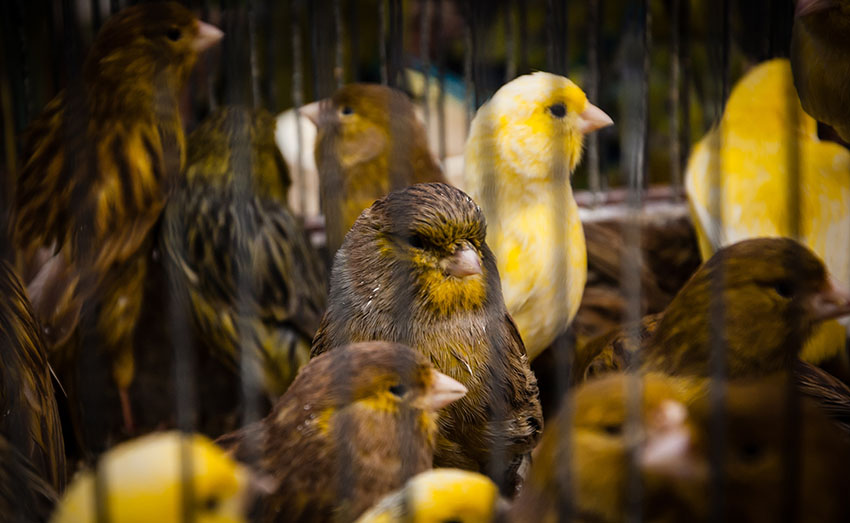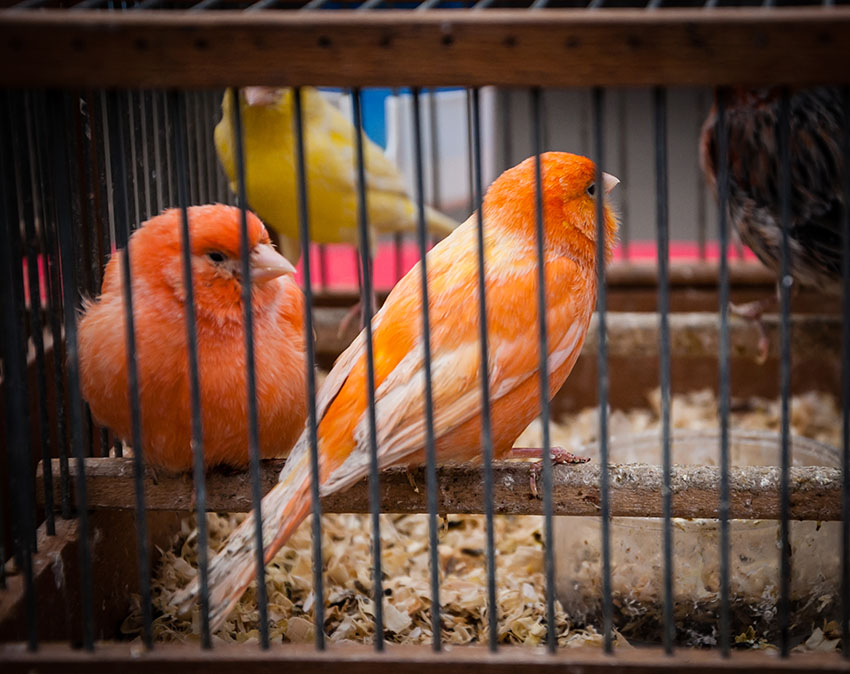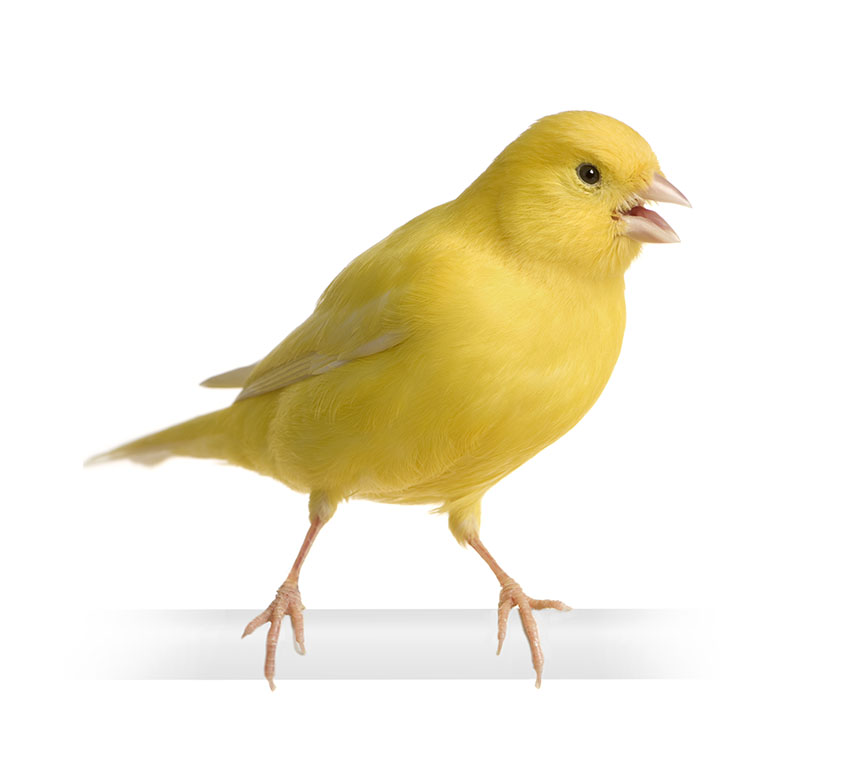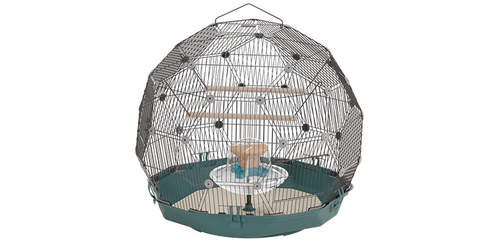Having reassured yourself that keeping pet finches is what you really, really want to do, you now need to choose your birds.

Canaries are highly popular cage birds across the world
Canaries and Zebra finches are by far the most popular and readily-available small birds. You might already know that one of these common species is exactly what you’re looking for. If your hopes are pinned on something slightly more unusual, it’s important to find out as much as you can about the species. Some birds – Java sparrows, for example – are boisterous and territorial. Others, like the Star finch, tend to be timid and prone to stress. You shouldn’t always assume that a cosy set up with pairs of birds snuggling up in a modest-sized cage is going to suit all types of finch.
It’s best to choose your birds on the basis of health and personality, rather than the more superficial criterion of colour. Many buyers go Canary hunting with an image of a classic yellow bird who sings like… well… like a Canary. But, having pinpointed your yellow specimen, there are important checks to make. If the bird is singing and tweeting, alert, lively, sitting upright and mixing happily with his cage mates, you have probably found your ideal pet. If, on the other hand, the bird is sitting quietly at the back with his feathers ruffled up while his friends sing and play, there may be problems. Ill health manifests subtly in birds, but a fluffed-up, unenergetic Canary usually signals problems.
Other signs of ill health might be more obvious – for example a wheeze, a limp, a wing held at an awkward angle, bald patches on the feathers, crusty nostrils, dull eyes, dirty chins, breasts or vents, or a protruding breast bone. If ill health is this plain, avoid all the birds in that cage, as most bird illnesses are contagious and the others are likely to be infected.
Some individuals might be shy or flighty, which can also present problems in a cage containing more outward-going, stoical birds. Watch how the caged birds interact. Buy ones that are already living happily side by side; and if this personality is not immediately obvious, ask the seller for more insights. Check the bird’s age, too – a ten year lifespan seems very short when you buy a bird who has already lived eight of them.

Canaries come in different colour varieties
One simple trick is to visit the shop or breeder in the morning. Birds are at their liveliest straight after breakfast, and that’s when their true personalities often shine through.
In addition to physical signs of good health, you also need to pay close attention to the conditions the birds are being kept in:
- Are the cages and cage accessories clean? If not, ill health may be lurking beneath the birds’ apparently healthy exterior.
- Are the food and water containers full, and does the non-seed food look fresh? Poor diet is another health time-bomb.
- Are the bird cages large enough? If the birds have been in cramped conditions for a long time, they will be stressed.
- Are the birds in a panic? This would suggest that they are not used to human presence, or that there’s something else in or beyond the cage that’s freaking them out. Such birds might be hard to settle in.
- Ask the seller questions. Whether they’re a breeder or a member of staff in a shop, the person selling you the finch should know a lot about the birds. If they don’t, how can you trust that their finches have been well looked after? You could argue that there is a duty to ‘rescue’ birds that have not been given the best start in life; but ill health in a bird will commonly lead to its death. Furthermore, your purchase will help keep the dealer in business, and in the long term that’s not a good thing.
- Ask for a written guarantee of health for your new bird. Many places will offer this as a matter of course. It should enable you to return the pet finch and get a refund should the vet discover any existing health problem in the young bird.
- If you’re choosing birds for an outdoor aviary or bird room, you should buy ones from a breeder who keeps his birds outside. They will be acclimatised to the highs and lows of outdoor living, whereas a bird born and raised in a centrally heated indoor space is likely to catch a chill if put straight into an aviary.
Choosing a Canary that will Sing
Singing is the skill that brought Canaries into human households in the first place, so it is inevitable that a would-be Canary keeper will want to hear that famous melodious warbling. You will need to get male birds if you want ones that produce songs with all the complex music associated with the bird, and if you mix them with females they will chirp their little hearts out.

Canaries are famous singers. But does your bird have the avian X-factor?
Hen birds can sing, but their song is far more limited than the cock’s. It’s also worth noting that Canaries, both male and female, stop singing during their annual moult.
All Canary varieties sing, but the ones reckoned to have the best voices are the Harz (German) Roller, the American singers, the Spanish Timbrado and the Waterslager (see the Song Canaries section, below). In the singing category of Canary shows, these are the four types most commonly encountered.





Comments
There are no comments just yet